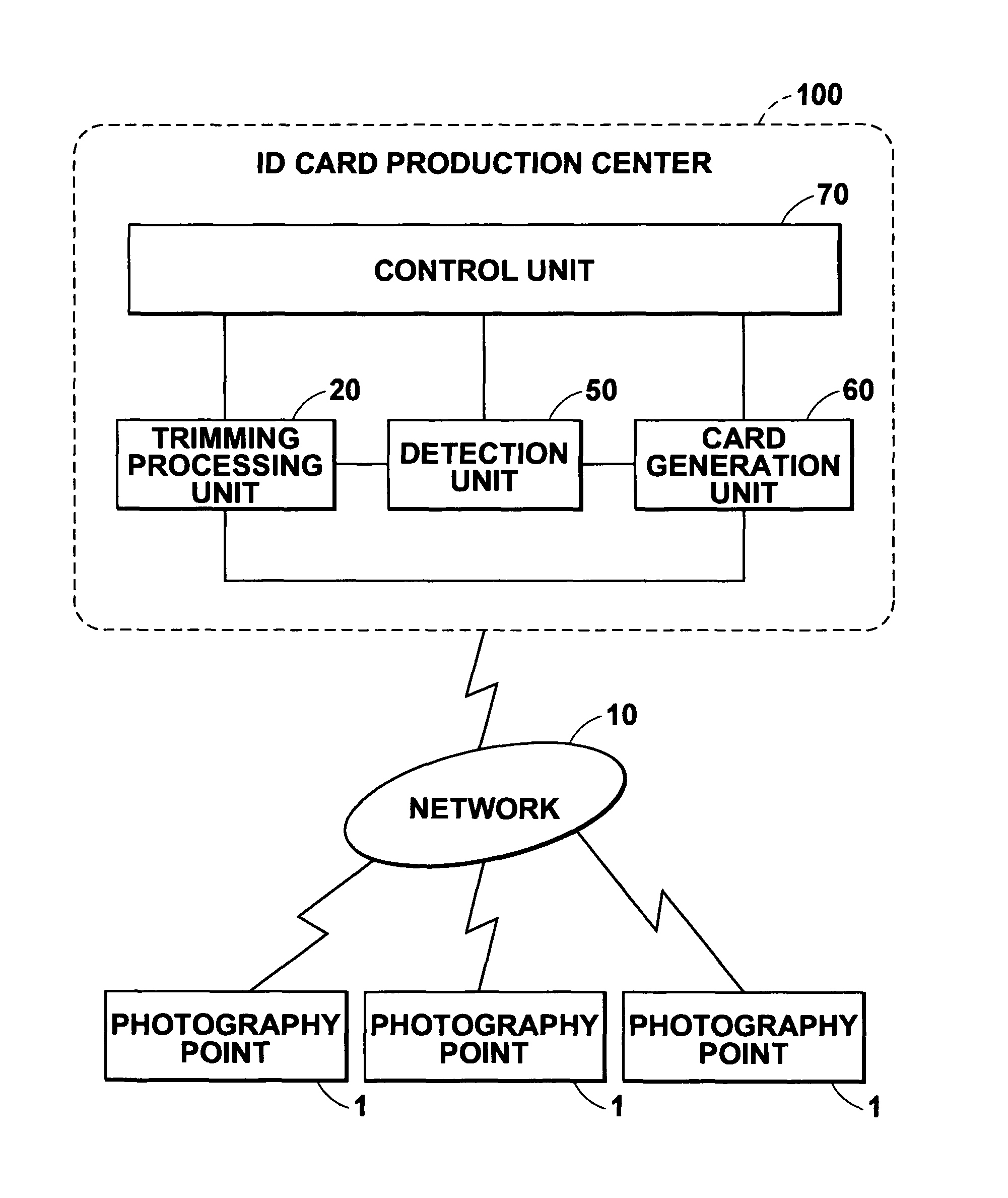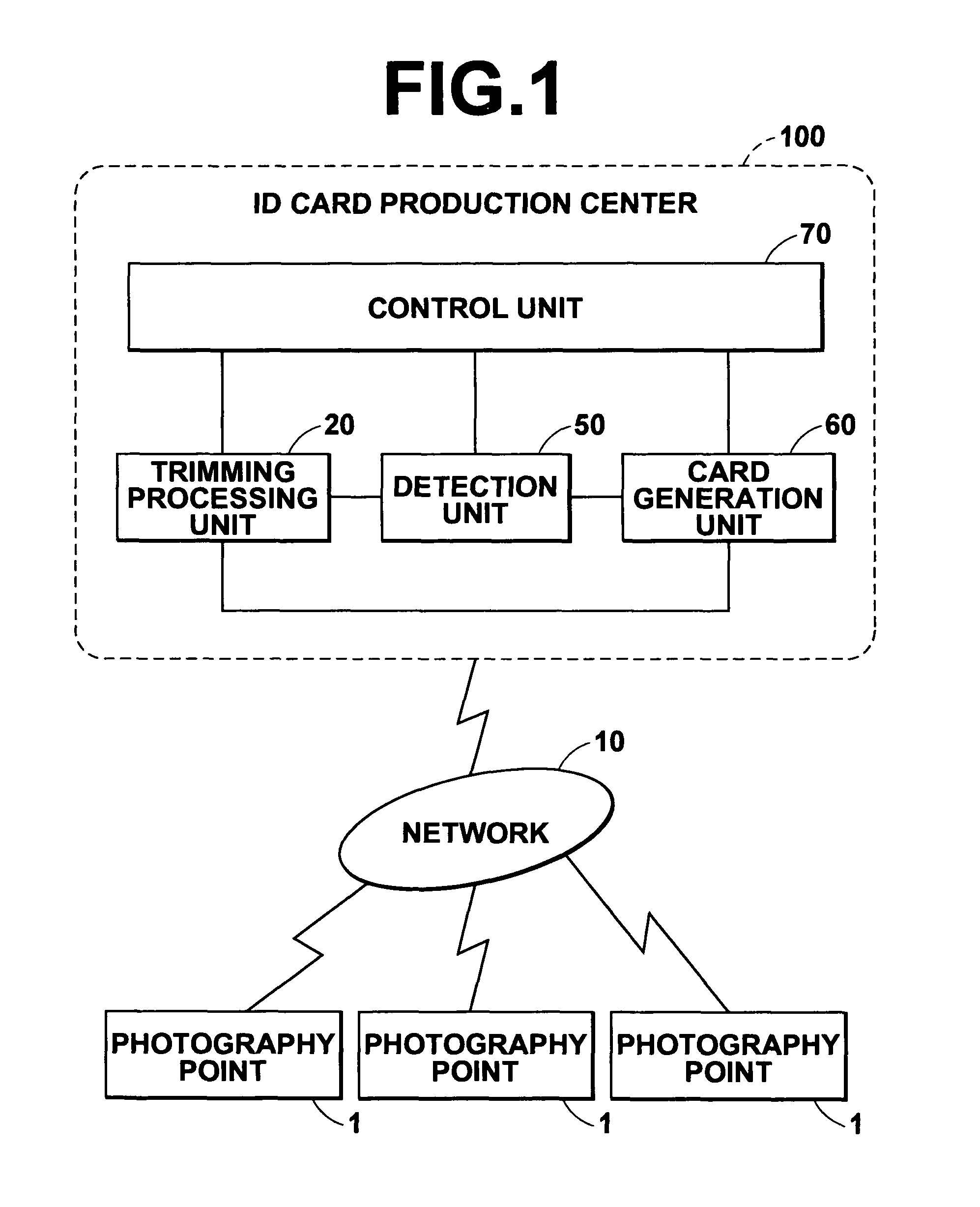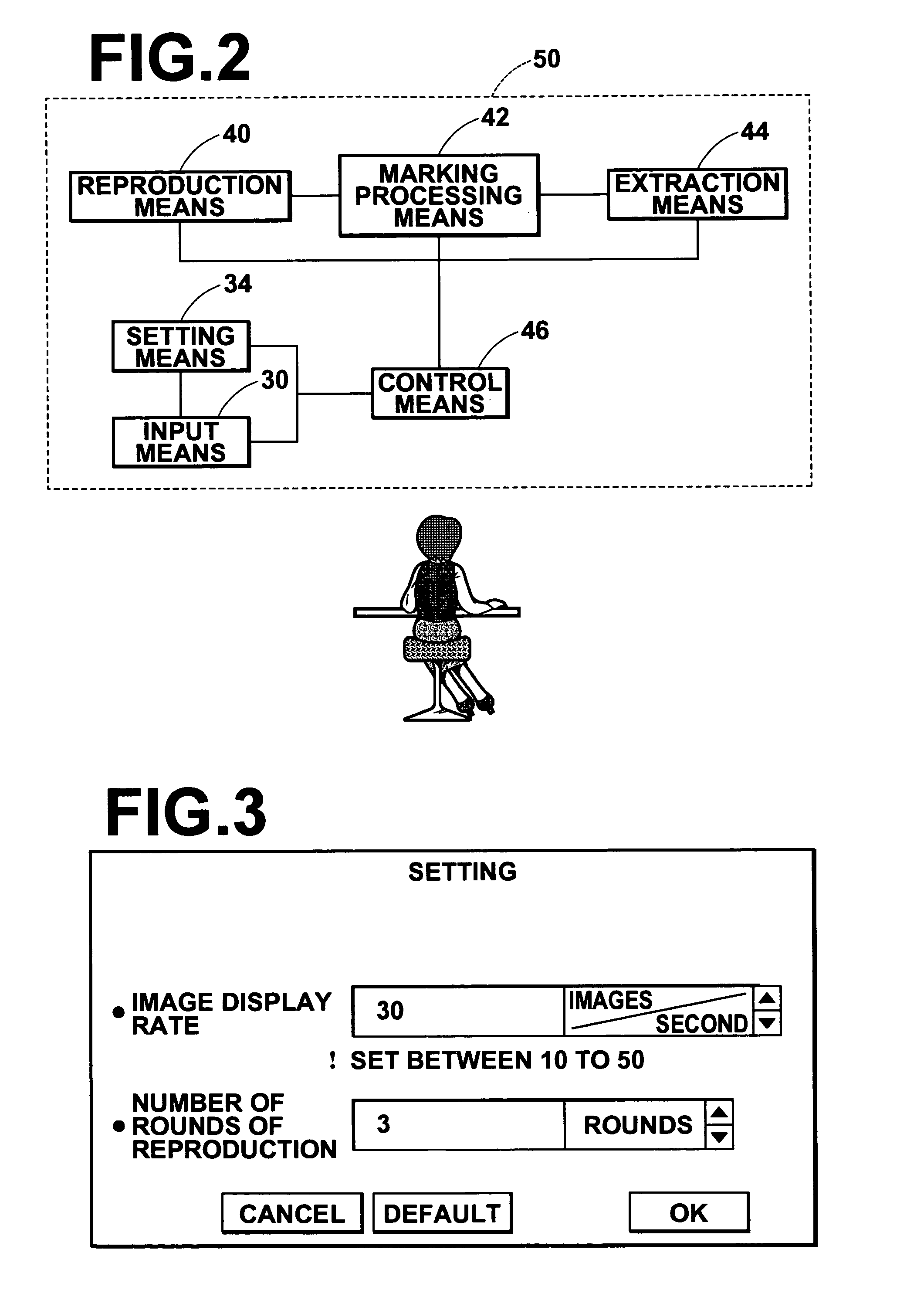Method, apparatus, and program for detecting inadequately trimmed images
a technology of inadequate trimmed images and programs, applied in the field of methods, apparatuses, and programs for detecting inadequately trimmed images, can solve the problems of large apparatus, inconvenient user, and limited installation locations of apparatus, and achieve the effect of accurate and timely detection
- Summary
- Abstract
- Description
- Claims
- Application Information
AI Technical Summary
Benefits of technology
Problems solved by technology
Method used
Image
Examples
Embodiment Construction
[0043]Hereinafter, an embodiment of the present invention will be described with reference to the accompanying drawings.
[0044]FIG. 1 is a block diagram showing the configuration of an ID card issuing system in the embodiment of the present invention. As shown in FIG. 1, the ID card issuing system comprises photography points 1 for obtaining photographs by photography of people whose ID cards are to be generated and an ID card production center 100 for generating the ID cards by using the photographs sent from the photography points. The photography points 1 and the ID card production center 100 are connected to each other by a network 10. Therefore, the photographs obtained at the photography points 1 are sent to the ID card production center 100 via the network 10.
[0045]The ID card production center 100 comprises a trimming processing unit 20, a detection unit 50, a card generation unit 60, and a control unit 70 for controlling the trimming processing unit 20, the detection unit 50...
PUM
 Login to View More
Login to View More Abstract
Description
Claims
Application Information
 Login to View More
Login to View More - R&D
- Intellectual Property
- Life Sciences
- Materials
- Tech Scout
- Unparalleled Data Quality
- Higher Quality Content
- 60% Fewer Hallucinations
Browse by: Latest US Patents, China's latest patents, Technical Efficacy Thesaurus, Application Domain, Technology Topic, Popular Technical Reports.
© 2025 PatSnap. All rights reserved.Legal|Privacy policy|Modern Slavery Act Transparency Statement|Sitemap|About US| Contact US: help@patsnap.com



